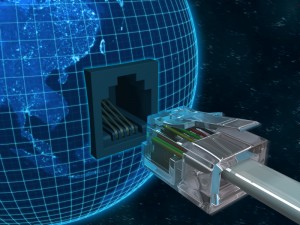Dictionary Series – IP Clock Lingo: A Reference Guide
Not sure what an IP clock system is or whether you even need one? Chances are you are not alone! An IP clock system is a grouping of clocks on one network of Power-over-Ethernet (PoE) infrastructure for the synchronization and display of an accurate time source. Understanding these IP clocks and how they function matters when making important decisions for the clocks you will be installing in your facility. To help you along, here are some words and phrases worth knowing when learning about the intricacies of an IP clock system. So put on your thinking hat and absorb the following words below.
(S)NTP Server: a time server that distributes Network Time Protocol for the synchronization of accurate time to computerized devices, such as IP clocks
Power-over-Ethernet: also known as PoE; refers to the powering and synchronization of a device by an Ethernet connection over a network infrastructure
PoE Injector: used when network infrastructure only sends data and a single device needs an injection of power in order to run via Ethernet connection
PoE Switch: a centralized hub that distributes data and power to multiple IP clocks through individual Ethernet connections
Clock Monitor: a program that can be installed on a computer attached to a network and allows for the remote configuration of each individual IP clock tied into the network manually programming each clock
Server Redundancy: when an IP clock can store multiple NTP and SNTP server addresses to guarantee back-up synchronization in the event that one server is down and fails to communicate
IP Address: an individual numeric address for a device that is connected to a network and is used to communicate with the device that belongs to the specified address
Elapsed Time: timing capabilities that can be found in digital IP clocks and can be programmed to count up or down at a specified time
Control Box: a control panel for elapsed time IP clocks that allows for the easy use of its start, stop, count up, and countdown features
Push Switch: a button found on devices that allows for local programming and configuration of the various settings it may have
Brightness Adjustment: energy saving feature available for IP digital clocks that allows multiple brightness settings of the time display
Cat 5/6 Cable: one wire made up of 8 smaller wires, each of them being routed to their designated opening in the end of a connector, sends signals typically used for network Ethernet connections
Router: assigns and delivers IP addresses to individual devices in a network
Static IP Address: number given to a device as its permanent internet address reference but that a DHCP may temporarily change to avoid conflicts from having two devices with the same static address in one session of internet use
DHCP: a Dynamic Host Configuration Protocol allows for the automatic configuration of IP clocks by eliminating the need for a manual intervention by a network administrator, providing a vital record of devices that are synchronized to the network, and removing the odds that any two devices contain the same IP address

